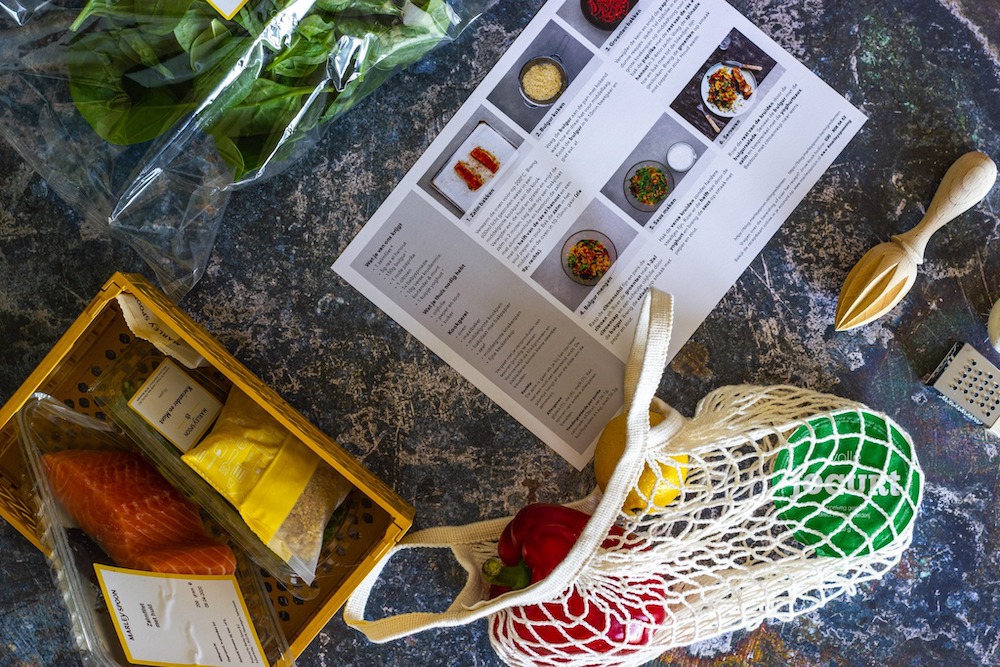Looking ahead to the coming weeks, we can’t help but feel the tingle of cautious optimism. Vaccines are slowly working their way through the population and warmer months are promising not only to mute the potency of the virus but also to invite us onto terraces across the city.
However, as we emerge out of the stupor of the COVID crisis, we’re acutely aware that there will be no “going back to the way it was,” and instead we’ll need to take stock of all that has changed – for the bad but also for the good.
There has been so much focus on the negative impact on the restaurant and hospitality industries generally. And while we in no way want to diminish the pain that it has caused many of our friends in Lausanne (seriously, can you imagine paying rent for a year but barely being allowed to do business?!), we do want to start thinking about how this pandemic has changed us and how we can expect the world around us to change as a result.
As one of our idols, the sage Dolly Parton, once said: “We cannot direct the wind, but we can adjust the sails.”
To understand better what our restaurant experiences will look in the future, we sat down with local hospitality expert and Academic Director of the César Ritz Colleges Tanja Florenthal.
Like the rest of us, Tanja is looking to adjust her metaphorical sails and find the positive that could come from our giant social experiment to stay home for a year. “It’s an exciting time in that we’ll be able to witness the industry pivoting to survive. This situation is ripe for innovation,” she explained enthusiastically.
So what’s on the innovation menu? Here are five trends she expects to emerge post-pandemic:
The home chef revolution
During the pandemic, more and more people cooked from home and cooking enthusiasts tripled. If eating at home stays, it will have ramifications for grocery shops and for restaurants. We have moved away from cooking as housework, to a leisure activity (from “food work” to “food play”) as people find that cooking from home saves money, helps them eat healthier and allows them to discover new recipes. Family time and cooking together is also important, and consumers are looking at taking the time to cook high quality meals at home.
Takeaway is here to stay
Drive-throughs, including fine dining takeaways, and food trucks will likely become omnipresent, not just for fast food, but for grocery stores and sit-down restaurants. While fast-food drive throughs are an established concept, there is not a similar structure yet for more elaborate foods. The epoch of 3-hour long sit-down fine dining meals is over, as consumers want meals that are convenient, fast and inexpensive. We might even see Michelin star restaurants moving to serve us in food trucks! Life is not easy when Uber Eats takes 30 percent of your revenue in fees, and so restaurateurs are re-thinking how to tackle food deliveries.
Food gets personal
Every crisis sparks innovation, and technology is shaping the industry. Not only through ordering through a smartphone, but also in personalizing food. Food is personal in almost every way. The future of food will be about even more convenience and personalization. There will be more options and services for people to customize their food: order your pineapple vegan pizza, your extra spicy Thai soup, or your gruyere-instead-of-feta Greek salad: the future is personal and online. The industry needs to continue to expand culinary innovation and challenge what has not been done before to stay relevant with customers’ ever-changing dietary needs.
Grocery shopping transformed
Knowing that 85% of consumers do not know what they are having for dinner until hours before mealtime, grocery shops consumers will look for on-demand grocery delivery, within one to two hours. Groceries stores could adapt to offer takeout offerings of chef-prepared meals including wholly or partially prepared multi-meal packages complete with final cooking instructions. However, only early movers will win, if they are agile: customers won’t put up with inconvenient delivery, lack of selection, and price.
Coworking for kitchens
Cloud kitchens have started to pop up. They are commercial kitchen facilities built to produce meals specifically for delivery. Those ghost kitchens are not restaurants and do not offer a dining room, but they only consist of shared kitchen space with culinary staff preparing meals that are then delivered to, typically through online delivery companies such as Uber Eats.
Is helping shape the future of local hospitality is an adventure you want to embark on? To support the industry’s recovery, Hotel Institute Montreux – is offering 50% off its programs for Swiss Citizens and C Permit holders. For more information, visit HIM’s website.
This content is sponsored by SEG – an alliance of hotel and culinary schools that includes HIM. A huge thank you to all the businesses that support The Lausanne Guide
